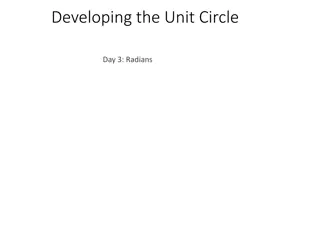
Role of SEBI in Indian Securities Market Regulation
Discover the functions and roles of the Securities and Exchange Board of India (SEBI) in overseeing and regulating the securities market in India. Learn about SEBI's responsibilities in regulation, supervision, investor protection, market infrastructure development, licensing of intermediaries, insider trading monitoring, takeover regulation, investor education, policy development, and enforcement of regulations. SEBI plays a critical role in maintaining investor confidence and market integrity.
Download Presentation

Please find below an Image/Link to download the presentation.
The content on the website is provided AS IS for your information and personal use only. It may not be sold, licensed, or shared on other websites without obtaining consent from the author. If you encounter any issues during the download, it is possible that the publisher has removed the file from their server.
You are allowed to download the files provided on this website for personal or commercial use, subject to the condition that they are used lawfully. All files are the property of their respective owners.
The content on the website is provided AS IS for your information and personal use only. It may not be sold, licensed, or shared on other websites without obtaining consent from the author.
E N D
Presentation Transcript
Dr. Muzaffar Ahmad Dar Dr. Muzaffar Ahmad Dar
The Securities and Exchange Board of India (SEBI) is the regulatory authority responsible for overseeing and regulating the securities market in India. It was established in 1988 as a non- statutory body and was subsequently given statutory powers through the SEBI Act of 1992. SEBI's primary objective is to protect the interests of investors, ensure fair and transparent market practices, and promote the development and regulation of the securities market in India. Here are the key functions and roles of SEBI: Regulation and Supervision: SEBI formulates rules, regulations, and guidelines to regulate various segments of the securities market, including stock exchanges, intermediaries, and market participants. It conducts regular inspections, audits, and investigations to monitor compliance with its regulations and ensure fair market practices. Investor Protection: SEBI works to safeguard the interests of investors by ensuring that companies provide accurate and timely information to the public, thereby promoting transparency and reducing information asymmetry. It takes measures to prevent fraudulent and unfair trade practices that could harm investors. Development of Market Infrastructure: SEBI plays a crucial role in the development and modernization of the securities market infrastructure, including stock exchanges, depositories, and clearing corporations. It encourages the adoption of advanced technologies to enhance market efficiency and transparency.
Licensing and Regulation of Intermediaries: SEBI regulates various intermediaries in the securities market, such as brokers, investment advisors, mutual funds, portfolio managers, and credit rating agencies. It issues licenses to these intermediaries and monitors their activities to ensure they operate within the defined regulatory framework. Monitoring Insider Trading: SEBI monitors and regulates insider trading activities to prevent individuals with access to non-public information from benefiting unfairly in the market. Regulation of Takeovers and Mergers: SEBI oversees and regulates the process of takeovers and mergers, ensuring that such activities are conducted in a fair and transparent manner. Investor Education and Awareness: SEBI undertakes initiatives to educate and create awareness among investors about the functioning of the securities market, their rights, and the risks associated with investing. Research and Policy Development: SEBI conducts research, studies market trends, and develops policies to facilitate the growth and development of the securities market while ensuring investor protection. Enforcement of Regulations: SEBI has the authority to take enforcement actions against entities or individuals that violate its regulations. These actions can include penalties, fines, disgorgement of ill-gotten gains, and even barring individuals from participating in the market. SEBI's role is critical in maintaining the integrity, stability, and efficiency of the securities market in India. Its regulatory framework aims to strike a balance between investor protection and market development, fostering a healthy environment for capital raising and investment activities.
Investor grievances refer to complaints, concerns, or disputes raised by investors regarding their interactions with financial intermediaries, companies, or regulatory bodies. These grievances can arise from issues such as unfair practices, non- compliance with regulations, inadequate disclosure, or mismanagement of investments. An effective investor grievance redressal system is crucial for maintaining investor confidence, promoting transparency, and ensuring a fair and transparent securities market.
1. Regulatory Bodies and Authorities: Regulatory bodies like the Securities and Exchange Board of India (SEBI) play a significant role in overseeing investor grievances. They establish guidelines, regulations, and mechanisms for addressing complaints. SEBI has established the SCORES (SEBI Complaints Redress System) platform for online filing and tracking of investor complaints against listed companies, intermediaries, and mutual funds. 2. Intermediaries and Entities: Financial intermediaries, such as stockbrokers, depositories, mutual funds, and credit rating agencies, have their own grievance redressal mechanisms. These mechanisms are designed to address complaints related to their services, operations, and conduct. Investors can approach these intermediaries directly to seek resolution. 3. Investor Education and Awareness: Investor education initiatives are essential in empowering investors to understand their rights and responsibilities and to make informed decisions. Awareness about grievance redressal mechanisms and processes helps investors know where and how to report grievances. 4. Ombudsman Schemes: Some regulatory bodies, such as the Reserve Bank of India (RBI), have established ombudsman schemes to address complaints against certain financial services providers. These ombudsman offices provide a mechanism for resolving disputes in a non-legal, efficient, and cost-effective manner.
Online Platforms and Portals: Many regulatory bodies and financial institutions provide online platforms for investors to file complaints and track their status. These platforms enhance accessibility and transparency in the grievance redressal process. 6. Investor Protection Fund (IPF): Stock exchanges and regulatory bodies often establish Investor Protection Funds to compensate investors in case of default by brokers or intermediaries. This fund helps provide financial relief to affected investors. 7. Legal Recourse: In cases where informal resolution mechanisms fail, investors can seek legal recourse through courts, tribunals, or other dispute resolution mechanisms. 8. Timely Resolution and Communication: An effective grievance redressal system should focus on timely resolution of complaints and clear communication with investors throughout the process. Regular updates on the progress of complaints instill confidence in the system. 9. Mediation and Arbitration: Mediation and arbitration can be used to resolve disputes between investors and financial entities. These alternative dispute resolution methods can be less time-consuming and costly compared to legal proceedings. 10. Regular Review and Improvement: Regulatory bodies and institutions should periodically review their grievance redressal mechanisms and make necessary improvements based on feedback and changing market dynamics. Overall, a well-structured investor grievance redressal system enhances investor protection, promotes market integrity, and contributes to the overall credibility and transparency of the financial system.
Insider trading refers to the buying or selling of securities (such as stocks or bonds) by individuals who have access to non-public, material information about a company. This privileged information can give insiders an unfair advantage in the market and undermine the principle of fair and transparent trading. Insider trading is generally considered illegal, as it can lead to market manipulation, unequal access to information, and erosion of investor trust. Regulatory bodies like the Securities and Exchange Commission (SEC) in the United States and the Securities and Exchange Board of India (SEBI) have strict rules and regulations to prevent and punish insider trading.
Investors' awareness refers to the level of understanding and knowledge that investors have about the financial markets, investment instruments, and their rights and responsibilities. Awareness is essential for investors to make informed decisions, protect their investments, and navigate the complexities of the financial world. Key aspects of investors' awareness include: Financial Literacy: Understanding financial concepts, terms, and investment strategies empowers investors to make well-informed decisions. Risk Management:Awareness about the risks associated with different investments helps investors assess potential losses and rewards. Investment Options: Being aware of various investment options, such as stocks, bonds, mutual funds, and real estate, allows investors to diversify their portfolios effectively. Regulations and Rights: Knowing their rights as investors and understanding regulations helps investors protect themselves from fraud, misinformation, and unfair practices. Market Behavior:Awareness of market trends, economic indicators, and psychological biases can aid investors in making rational decisions. Financial Planning: Understanding the importance of setting financial goals, budgeting, and planning for retirement or emergencies contributes to long-term financial well-being. Investors' awareness is often promoted through educational programs, seminars, workshops, online resources, and financial literacy campaigns initiated by regulatory bodies, financial institutions, and non-profit organizations.
Investors' activism involves investors taking an active role in influencing the behavior, policies, and practices of the companies in which they invest. It goes beyond passive investing and includes efforts to bring about positive changes in corporate governance, environmental and social responsibility, executive compensation, and other aspects. Investors' activism can take various forms: Shareholder Resolutions: Investors propose resolutions at annual general meetings to address issues like board composition, sustainability practices, and executive pay. Proxy Voting: Shareholders can cast votes on company matters remotely through proxy voting. This allows them to express their opinions on important decisions. Engagement and Dialogues: Institutional investors engage in dialogues with company management to discuss concerns, suggest improvements, and advocate for change. Divestment: Investors may choose to divest from companies that do not align with their values or exhibit unethical behavior. Impact Investing: Some investors actively seek investments that generate positive social or environmental impact while also generating financial returns. Investors' activism can create positive changes within companies and encourage them to adopt more sustainable and ethical practices. It holds companies accountable for their actions and aligns business interests with broader societal and environmental concerns.
The Efficient Market Hypothesis (EMH) is a theory in finance that suggests that financial markets are efficient and that all available information is quickly and accurately reflected in security prices. In other words, the prices of financial assets, such as stocks, bonds, and commodities, already incorporate all publicly available information, making it difficult for investors to consistently outperform the market through stock picking or market timing. The EMH was developed in the 1960s and has been a significant concept in modern finance. It has three main forms: Weak Form Efficient Market Hypothesis: In this form, the hypothesis states that current stock prices already reflect all historical price and trading volume information. This means that past price movements or trading patterns cannot be used to predict future price movements since all that information is already factored into the current price. Semi-Strong Form Efficient Market Hypothesis: This form asserts that stock prices already incorporate not only historical price and volume information but also all publicly available information, including news, financial reports, and other market-related information. Therefore, it suggests that even detailed analysis of public information cannot lead to consistently superior investment returns, as any new information is quickly absorbed by the market. Strong Form Efficient Market Hypothesis: The strongest version of the EMH suggests that stock prices incorporate all information, including public and private information. This means that even insider information would not give an investor an advantage, as it is already reflected in the stock price.






















